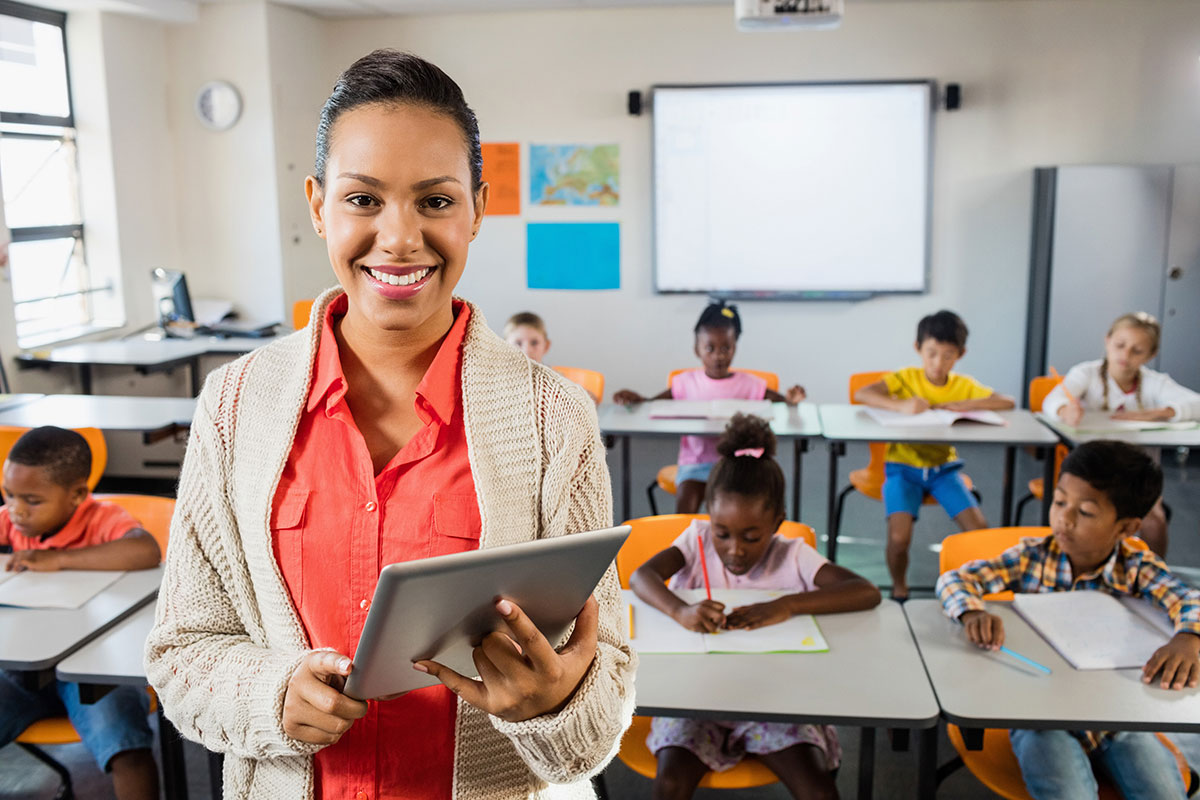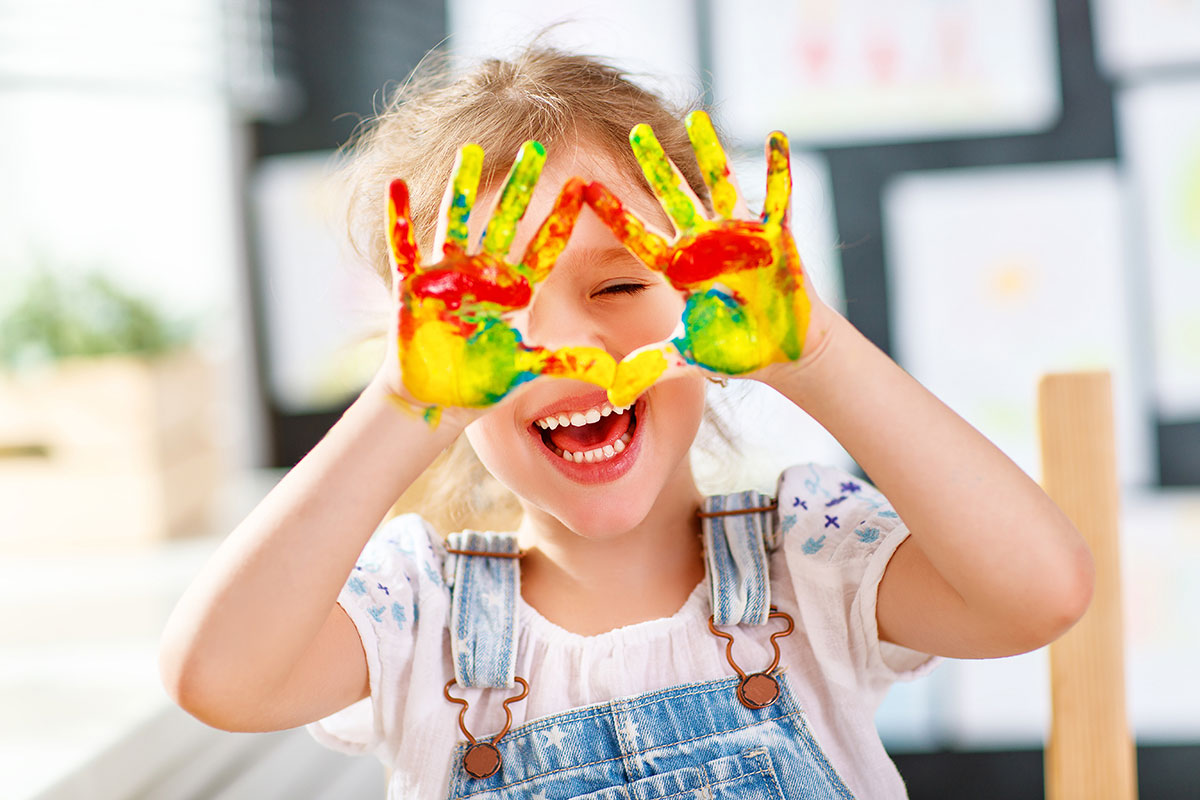Project-Based Learning: A PBL Lesson Plan for the Classroom
Author: Leader in Me
October 26, 2018

Preparing our students for the future is an unpredictable task. But, with project-based learning, we can at least prepare our students to be adaptive to any situation they may face.
Every year, we see students come to us with a new set of experiences and challenges. Our students are coming to us today is different than they did ten, five, or even two years ago. I’ve noticed a specific unfortunate change that seems to increase with each passing year. More and more students simply want to give up as soon as something is challenging or as soon as the answer isn’t right in front of them. One of the quotes posted in my classroom is from author Dave Burgess’s book Teach Like a Pirate: “It’s not supposed to be easy, it’s supposed to be worth it!” One of my goals each year is to help my students see the value in that statement.
In order to bring that quote to life, it’s imperative that we provide our students with authentic learning experiences, and give them every opportunity to explore, analyze, design, create, and understand the world around them. Students today have information at their fingertips, and we, as educators, have to figure out the best teaching methods to help our students learn in this world they now live in. It’s our job to make sure we provide students opportunities for critical thinking, communication, collaboration, and creativity (otherwise known as the 4Cs in education). Incorporating project-based learning (PBL) in your classroom is a great way to help students get excited about content, engage in productive struggle, and experience true ownership of their learning.
What is Project-Based Learning?
We’ve all been doing projects in our classrooms for years, but there is a big difference between doing projects and project-based learning. Projects are usually the final piece after learning has already taken place. It’s a way to show evidence of the learning, but new learning most likely didn’t take place in the creation of the project.
Project-based learning is different because the learning is spread out over time. Students are given the opportunity to learn, discover, and create throughout the entire learning process. According to the Buck Institute for Education, “project-based learning is a teaching method in which students gain knowledge and skills by working for an extended period of time to investigate and respond to an authentic, engaging, and complex question, problem, or challenge.”

Project-Based Learning Lesson Plan
Project-based learning focuses on the process as much, if not more, than the outcome. Here are some steps to help you get started with PBL in your classroom:
- Start with the state or national standards you are required to teach.
- Then, use the standards to develop your learning targets for your project-based learning.
- Focus on the standards that have longevity (learning that is important beyond just this school year).
- Look closely at the verbs for each standard. Standards that use verbs such as “create,” “design,” or “demonstrate” lend themselves to higher levels of learning and are perfect for PBL.
- Next, create an essential question (there can be more than one if necessary) that the students should try to answer throughout PBL. The question should be complex and should be referred to often.
- Then, develop the criteria that will show evidence of the learning targets. I’ve always used rubrics, but recently, I discovered a great hack from authors Ross Cooper and Erin Murphy in the book Hacking Project Based Learning.
- According to Cooper and Murphy, they provide their students with a list of the learning targets established by the teacher(s).
- Then they have students get in groups of four or five to develop strengths for the learning targets (clear ideas of what it looks like to meet each learning target).
- They curate the strengths and collectively (with their students) decide on which strengths to use for each learning target. It’s important to have clear and specific strengths for each one, but Cooper and Murphy stress the importance of making sure the strengths stay open-ended enough so students can choose how to meet the criteria for the strength of each learning target.
- Next, have a plan in place for giving ongoing feedback throughout the PBL. You will want to have a way to track the feedback you provide your students. It’s also important to have a place for students to keep track of the feedback from their peers, as well as a place for self-reflection and recording any questions, barriers, or successes they encounter along the way.
- The next thing you’ll want to do is a have a plan in place for delivering important information. According to Cooper and Murphy, “it is unlikely students will accidentally stumble upon uncovering all necessary content. Therefore some level of direct instruction will need to be integrated into your PBL unit.”
- Your direct lessons should develop naturally and come into play based on necessity. Students will be more excited about the PBL and more willing to try new approaches based off their new learning when mini direct lessons are integrated well throughout the PBL.
- If you deliver all of the important information at the beginning of the PBL, you have now crushed the excitement and minimized valuable learning opportunities for your students.
- If you wait until the end of the PBL to deliver all of your important content, you are likely to unproductively increase the stress levels of your students. A productive struggle is important, but the key word here is “productive.” There is a big difference between productive struggle and just straight-up struggle.
- Have a plan for conferencing with groups and conference often.
- Try to focus on asking questions (sometimes you’ll need to use guiding questions) to help students reflect and own their learning. Try to avoid giving them the answers. It’s far more powerful to ask students questions and allow them opportunities to figure out the answers that take them in the direction they need to go than it is for us to just show them how to get there.
- Be aware of who needs direct mini-lessons and who doesn’t. Some of your direct mini-lessons can be taught to just the small groups who need them rather than the whole group.
- Next, make sure students have a way to share their learning and reflect on the process.
- Part of the PBL should include creating something at some point throughout the process. This creation should lend itself to demonstrating the strengths that were determined for each learning target.
- Students should present their creations to an authentic audience. Some simple ways they can do this is blogging about it, presenting to younger students in other grades, or presenting to community members. Another great step to add here is making sure the students publish their work somewhere. In this digital age, digital student portfolios are a great way for students to keep track of their learning and growth throughout the year.
- Students should take time for self-reflection and reflection as a group. They should revisit the strengths that were determined for each learning target and see if they feel they met or exceeded the criteria (or even if they feel they didn’t meet or understand the criteria). They should also reflect on the essential question(s) they’ve been trying to answer throughout the unit.
Engaging in project-based learning has transformed my classroom environment and the learning experiences of my students for the better. I only have so much time each year to develop a love of learning, get students to believe in themselves, enhance their leadership skills, challenge them to discover the joy in productive struggle, build off their natural curiosity, develop their critical thinking skills, create powerful collaborative experiences, get them to own their learning, and help them discover potential far beyond what they see in themselves. I value the time I have, and it’s important I make the most of it! PBL gives me the opportunity to combine the curriculum with instilling these necessary life skills.
Kids today are counting on us to come through for them. They only know what they know. Let’s show them that learning IS fun, that working with others and believing in each other helps us achieve far more than we could ever achieve on our own, and show them they are exponentially more capable than they ever believed they were. Start today. Go big or start small. It doesn’t matter; just take a chance and start giving students an experience they’ll remember.
In the great words of Muriel Summers (principal of A.B. Combs Elementary in Raleigh, North Carolina), “children become who they are tomorrow based on the opportunities they have today.” Our goal as educators should be to provide students with as many opportunities as possible to help them open up even more opportunities in the future.
Enjoy the ride!
References:
Burgess, Dave. Teach Like a Pirate. San Diego, Dave Burgess, 2012.
Cooper, Ross, and Erin Murphy. Hacking Project Based Learning. Cleveland, Times 10 Publications, 2016.
What Is Project Based Learning (PBL)?, www.bie.org/about/what_pbl. Accessed 10 Mar. 2018.
Share Article on
Tags: education, project based learning, self-directed learning
